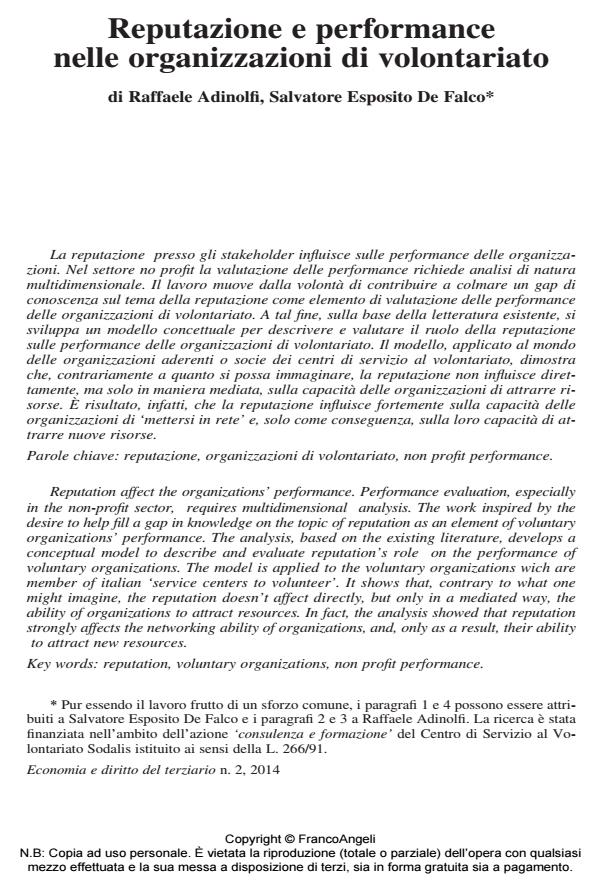Reputation affect the organizations’ performance. .
Journal title ECONOMIA E DIRITTO DEL TERZIARIO
Author/s Raffaele Adinolfi, Salvatore Esposito De Falco
Publishing Year 2014 Issue 2014/2
Language Italian Pages 16 P. 269-284 File size 89 KB
DOI 10.3280/ED2014-002004
DOI is like a bar code for intellectual property: to have more infomation
click here
Below, you can see the article first page
If you want to buy this article in PDF format, you can do it, following the instructions to buy download credits

FrancoAngeli is member of Publishers International Linking Association, Inc (PILA), a not-for-profit association which run the CrossRef service enabling links to and from online scholarly content.
Performance evaluation, especially in the non-profit sector, requires multidimensional analysis. The work inspired by the desire to help fill a gap in knowledge on the topic of reputation as an element of voluntary organizations’ performance. The analysis, based on the existing literature, develops a conceptual model to describe and evaluate reputation’s role on the performance of voluntary organizations. The model is applied to the voluntary organizations wich are member of italian ‘service centers to volunteer’. It shows that, contrary to what one might imagine, the reputation doesn’t affect directly, but only in a mediated way, the ability of organizations to attract resources. In fact, the analysis showed that reputation strongly affects the networking ability of organizations, and, only as a result, their ability to attract new resources.
Keywords: Reputation, voluntary organizations, non profit performance.
- Coming back to life: How business families revitalize "dead money" through family foundations Carmen Gallucci, Riccardo Tipaldi, Rosalia Santulli, in CORPORATE GOVERNANCE AND RESEARCH & DEVELOPMENT STUDIES 2/2023 pp.11
DOI: 10.3280/cgrds2-2022oa13746
Raffaele Adinolfi, Salvatore Esposito De Falco, Reputazione e performance nelle organizzazioni di volontariato in "ECONOMIA E DIRITTO DEL TERZIARIO " 2/2014, pp 269-284, DOI: 10.3280/ED2014-002004